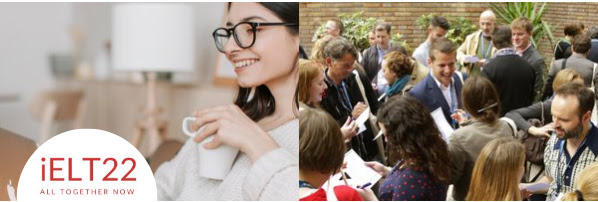Emily Bryson - Accessible learning: giving students a voice with simple drawings
INNOVATE ELT CONFERENCE 2022
This year's Innovate ELT conference was a hybrid event. The online conference was held on Friday, September 30th, while the first face-to-face sessions took place on Saturday, 1st Oct. in Oxford TEFL for the first time since 2019.
For the EIM teachers who attended on both days, it was the first in-person conference we'd attended since the pandemic started, giving us an opportunity to catch up with old acquaintances and to meet people that we'd got to know online over the last couple of years.
Over the next few weeks, we'll post a selection of some of our highlights from the conference.
Emily
Bryson
Accessible
learning: giving students a voice with simple drawings
I’ve seen a couple of sessions by Emily before, and it’s always a pleasure and an inspiration to be reminded how important visual resources are for promoting inclusivity in our classes. Emily works in ESOL in Scotland. These techniques are particularly helpful for learners who do not share the same writing scripts, have limited literacy, or for students with Specific Learning Difficulties (SpLDs). Nevertheless, I hope you'll agree that the multimodal support provided can scaffold learning for all learners regardless of their background or abilities.
Emily introduced the topic by running us through the various ways of introducing graphic facilitation in class:
- Whiteboard/flipchart
- Document camera: video film of whatever’s on your desk
- Drawing tablet connected to a projector
- Photos uploaded using Camscanner
As an accessible practitioner, Emily emphasises the need to provide differentiated opportunities to all learners at their level: challenging the fast finishers and offering additional support to those who need it.
Here are just a few of the many tips Emily suggested:
1. Sensory impairment. Use as large a font as possible (PPT 44 or 36), provide the text to accompany any audio input and avoid using different colours to convey meaning.
2. ADHD. Drawing is a way to help with focus and minimize distractions: Sunni Brown (see her TED Talk here) argues that doodles help us think. There is a ‘drawing effect’: if you draw to memorise vocabulary, you are more likely to retain it than if you just write the word.
3. Dyslexia. Infographics and sketchnotes can help reduce the processing load. Rather than asking students to read questions while doing a listening comprehension, use graphic organisers such as this one:
4. Literacy. Learners whose education has been interrupted, often the case with refugee students, may have limited study skills. They may need help organizing a notebook layout, planning, setting goals, and notetaking, e.g. recording vocabulary:
Use aids such as bullet journals and tick charts to establish good habits (not just study habits!). Emily recommends reading ‘Atomic Habits’ by James Clear to help establish positive routines.
5. Autism. These students can be helped by a clear routine. Visual calendars are also useful for learners with ADHD or limited literacy.
If you're unsure about your artistic abilities, Emily pointed out that graphic facilitators draw on internationally recognised icons to create a drawing alphabet. You don’t need to be good at drawing! Emily demonstrated some of these live in the session.
She emphasizes that it’s not about art, it’s about communication!
Emily in action
Resources
Download Emily’s free ebook here
ELTWell.com – Specialist support for neurodivergent learners








Comments
Post a Comment